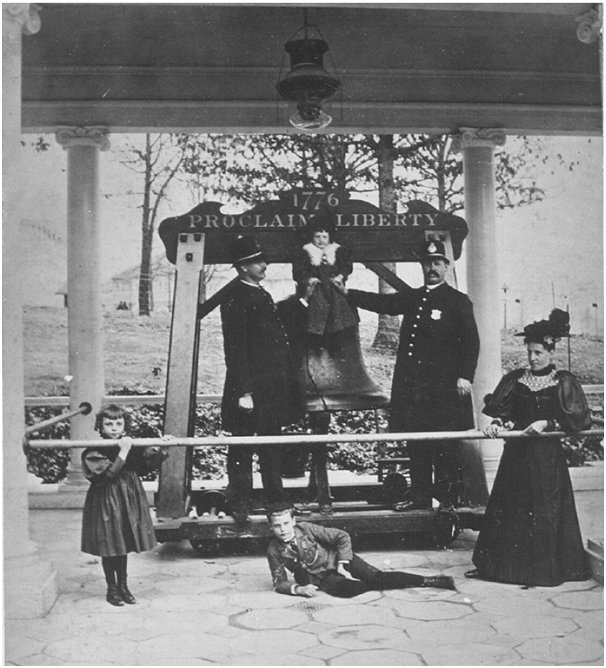Below is some background information and the three other known silver examples of this wonderful medal. Note that a bronze example is also shown. This brings the total silver medals known to four, counting the finest known specimen covered separately at this eNumismatist entry: https://enumismatist.com/new/2021/10/06/silver-award-medal-1895-cotton-states-and-international-exposition/
Lucy C. Andrews example
Below retrieved from:
Medals of Atlanta Cotton States and International Exposition of 1895 https://www.expositionmedals.com/1895/ (Please check the link for much more information)
February 7, 2020
57mm diameter, 5mm wide. The most rare of the Atlanta expo award medals, only 444 silver medals were made. Extremely rare, this is the only one we have ever seen. This was awarded to Lucy C Andrews…”
“About six thousand exhibits were examined. The Awards Committee awarded a total of 1,573 medals Gold medals 634 – Silver medals 444 – Bronze medals 495…
Silver Award Medal – 1895 Atlanta Cotton States and International Exposition

“On Obv ‘Atlanta Georgia USA’, Columbia in long chiton, holding a cornucopia filled with fruit in right arm, standing to left: in front of her, a winged wheel, and a small winged genius bearing a tablet inscribed INDUSTRY; in background to the left is the Fine Arts Building. Singed ‘PH MARTINY SC NY’, this medal is notable as the sole signed work of metallic art by by famous sculpture artist PHILIP MARTINY 1858-1927 whose his baby-like winged cherub has become the emblem of generations. “With it’s exuberant allegorical design and lovely modeling, Martin’s Cotton States Exposition medal exemplifies the high Beaux-Arts style of decorative sculpture.”
The reverse has a palm leaf, the American eagle, a cotton plant and the legend ‘COTTON STATES AND INTERNATIONAL EXPOSITION AWARDED TO WERNER BEHME (who was an inventor) ATLANTA GEORGIA USA MDCCCXCV’.
The medals were executed upon a design prepared under the supervision of Mr. Horace Bradley, Chief of the Department of Fine Arts, and were delivered in the Summer of 1896, while the World’s Columbian medals, awarded two years earlier, were being delivered.”
Above retrieved from:
Medals of Atlanta Cotton States and International Exposition of 1895 https://www.expositionmedals.com/1895/ (Much more information)
February 7, 2020
I. V. Joyce example
Description
Below retrieved from:
beta.medallicartcollector.com/medal/atlanta-cotton-states-and-intl-expo?scrollTop=683
for much more information from an enthusiastic medal collector
September 18, 2021
“The medal’s obverse bears standing Columbia with cornucopia in her arm, her cloak fluttering dramatically behind her; at her feet, winged cherub bearing sign labeled INDUSTRY; winged wheel at lower left; exposition building in background. Around upper left, ATLANTA – GEORGIA / U-S-A; signed around lower right, PH MARTINY – SC · NY ·
The reverse bears eagle at top, palm frond at left and cotton branch at right. Across, COTTON STATES / AND INTERNATIONAL / EXPOSITION / AWARDED TO / (cartouche engraved I. V. Joyce) / ATLANTA / GEORGIA / U · S · A / MDCCCXCV
The Cotton States and International Exposition of 1895 was held at the in Atlanta, Georgia. Nearly 800,000 visitors attended the event. The exposition was designed to promote the region to the world and showcase products and new technologies as well as to encourage trade with Latin America.
This is probably one of my all-time favorite exposition medals. It is modeled in extremely deep relief and is a masterpiece of Beaux-Arts design…“
References: Baxter 92, Marqusee 258” I. V. Joyce medal is the more easily found bronze example )
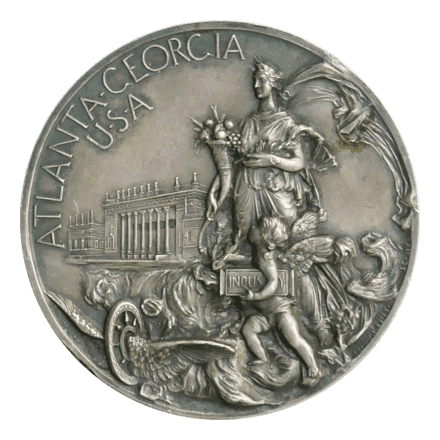
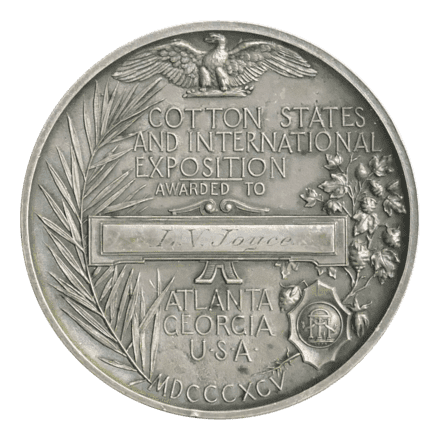
Above retrieved from:
beta.medallicartcollector.com/medal/atlanta-cotton-states-and-intl-expo?scrollTop=683
for much more information
September 18, 2021
Mrs. Henry Monk example
DOYLE Auctions
Below retrieved from Doyle Auctions
https://doyle.com/auctions/18cs02-coins-bank-notes-postage-stamps/catalogue/1087-united-states-1895-cotton-states-and
October 18, 2021
Sale 18CS02 | Lot 1087
United States 1895 Cotton States and International Exposition Silver Medal, Atlanta, GA
Catalogue: Coins, Bank Notes & Postage Stamps – Mon, Oct 22, 2018 at 2pm EDT

Lot Details
Lot 1087
United States 1895 Cotton States and International Exposition Silver Medal, Atlanta, GA
Silver Award Medal of which only 444 were struck, after exhaustive research we can find very few references or sale records to actual examples made available to the general public or collector, weighing 75.9 dwt, 57mm in diameter and 5mm in width, exhibiting near full grayish lustre on both sides with some minor surface abrasions on the very high points, and a few negligible rim nicks, overall outstanding. this example was awarded to Mrs. Henry Monk and is inscribed on the reverse. An extremely scarce medal offered here for the first time.
VF/XF
C Property of a Caribbean Collector
Estimate: $1,500 – $2,500
Sold for $1,440 (includes buyer’s premium)
Above retrieved from Doyle Auctions
https://doyle.com/auctions/18cs02-coins-bank-notes-postage-stamps/catalogue/1087-united-states-1895-cotton-states-and
October 18, 2021
Maria Cosio y Siurob example. “This Medal Have some damage on Edge” (sic)
Note that this example with damage sold, no original toning and no original like-new case sold for about $2800 in about 2018. This is from memory as when I first encountered this specimen the information was not behind a paywall. Worthpoint now requires a subscription to see the amount this specimen realized.

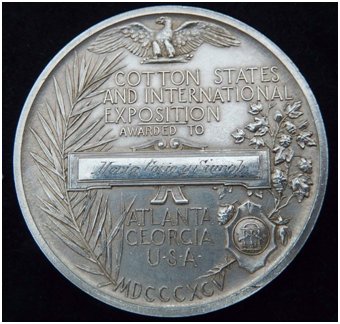
Below is wording in the eBay listing as captured by and retrieved from Worth Point (former ebay listing), https://www.worthpoint.com/worthopedia/1895-atlanta-cotton-states-1727097534
September 18, 2021 See link for more information.
Some historical background
“It was produced by medallist Peter L. Krider, Philadelphia. His shop excelled at casting, and was one of the largest medal making firms in the country – commissioned to make award medals for the Centennial Exposition in 1876, New Orleans Expo, and Atlanta Cotton States, and others. They produced exceptional pieces. Silver Award Medal – 1895 Atlanta Cotton States and International Exposition 57mm diameter, 5mm wide.
Obv ‘Atlanta Georgia USA’, Columbia in long chiton, holding a cornucopia filled with fruit in right arm, standing to left: in front of her, a winged wheel, and a small winged genius bearing a tablet inscribed INDUSTRY; in background to the left is the Fine Arts Building. Singed ‘PH MARTINY SC NY’, this medal is notable as the sole signed work of metallic art by by famous sculpture artist
PHILIP MARTINY 1858-1927 whose his baby-like winged cherub has become the emblem of generations. “With it’s exuberant allegorical design and lovely modeling, Martin’s Cotton States Exposition medal exemplifies the high Beaux-Arts style of decorative sculpture.”The reverse has a palm leaf, the American eagle, a cotton plant and the legend ‘COTTON STATES AND INTERNATIONAL EXPOSITION AWARDED TO Maria Cosio y Siurob
ATLANTA GEORGIA USA MDCCCXCV’. The medals were executed upon a design prepared under the supervision of Mr Horace Bradley, Chief of the Department of Fine Arts, and were delivered in the Summer of 1896, while the World’s Columbian medals, awarded two years earlier, were being delivered.”
Above is wording in the eBay listing as captured by and retrieved from Worth Point (former ebay listing), https://www.worthpoint.com/worthopedia/1895-atlanta-cotton-states-1727097534
September 18, 2021 See link for more information.
Designer
Note that the medal pictured at the link below is a bronze one.
“Cotton States and International Exposition, Atlanta, 1895
The award medal of the 1895 Atlanta Exposition (92) is worthy of note as the sole work of medallic art by Philip Martiny (1858-1927), the talented architectural sculptor from Strasbourg who “brought the full range of ornamental work of the Beaux-Arts style to America” (Craven). After he came to this country in the 1880s, Martiny worked with Saint-Gaudens, for whom he modeled the George Washington centennial medal (77), and he had a major hand in the sculptural decorations for the World’s Columbian Exposition. With its exuberant allegorical design and lively modeling, Martiny’s Cotton States Exposition medal exemplifies the high Beaux-Arts style of decorative sculpture.
BIBLIOGRAPHY: Craven, pp. 473-75; NSS 1923, p. 259; Taft, pp. 452-56.”
Retrieved from Numismatics.org
http://numismatics.org/digitallibrary/ark:/53695/nnan107433
September 18, 2021.
Manufacturer note:
- “Peter Lewis Krider (February 14, 1821 – May 12, 1895), also known as P.L. Krider, was a noted American silversmith, active in Philadelphia.
Krider was born in Philadelphia and worked on a farm from ages 10 to 14. From 1835-1841 was apprentice to Philadelphia silversmith John Curry, and worked as a journeyman for about 15 months at the well-known firm of Robert & William Wilson. Around 1842 he moved to Boston, where he worked for silversmith Obadiah Rich. When Rich sold out his establishment to Brackett, Crosby & Brown, Krider took charge. He later returned to Philadelphia to serve as the Wilsons’ foreman. In 1850 he established his own firm, Krider & Co., working from 1859 until about 1870 as Krider & Biddle with his partner John W. Biddle, and subsequently as Peter L. Krider. According to the Federal Industrial Censuses of 1860, 1870, and 1880, and a short description in Philadelphia’s Leading Industries (1866), his business was well capitalized and employed as many as 35 skilled workers. The firm was sold to August Weber in 1888 and renamed the Peter L. Krider Co., which remained in business until 1910.
Krider produced large amounts of solid silver flatware and hollowware, often sold through retailers such as Bailey and Company, J. E. Caldwell, and firms outside Philadelphia. He also created society and exposition medals, including award medals for the Centennial Exposition in 1876. His works are collected in the Art Institute of Chicago, Carnegie Museum of Art, Cooper Hewitt Museum, Dallas Museum of Art, De Young Museum, Philadelphia Museum of Art, Winterthur Museum, and Yale University Art Gallery.”
Retrieved from
https://en.wikipedia.org/wiki/Peter_L._Krider
August 20, 2021.
Biography:
“Krider began apprenticing in 1835 with silversmiths John Curry and R. & W. Wilson in Philadelphia. In addition to his classical training, he accepted a role as a journeyman for Obadiah Rich, a leading Boston silversmith. Krider began producing works independently in 1850 and formed his own shop in Philadelphia. He partnered with John W. Biddle from 1860-1870, and the firm was known as Krider & Biddle. Biddle managed the business during the Civil War when Krider enlisted in the Union Army. Throughout his career, Peter Krider made a variety of goods and gained notoriety for producing high quality medals, including those for the Centennial exhibit in Philadelphia. In addition, he made hollowware for several Philadelphia retailers such as J.E. Caldwell and Bailey and Company.”
Retrieved from Heritage Auctions
https://fineart.ha.com/artist-index/peter-l.-krider-and-co..s?id=500203803
September 18, 2021
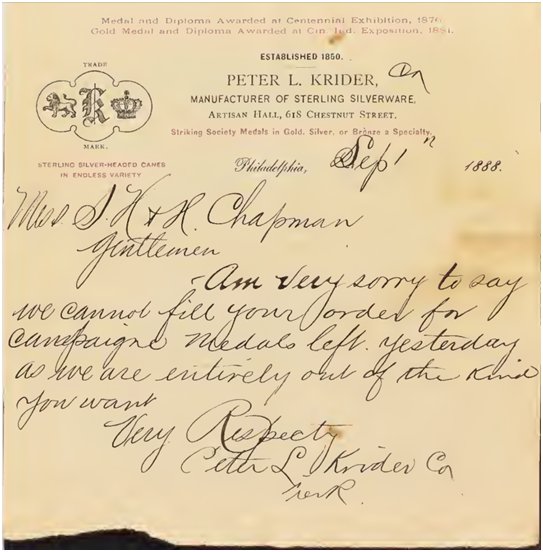
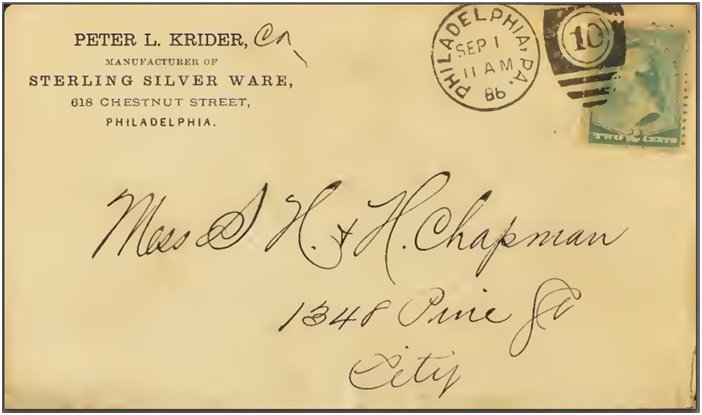
West Disinfecting Company, New York
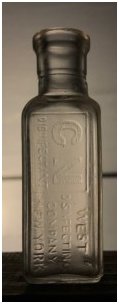
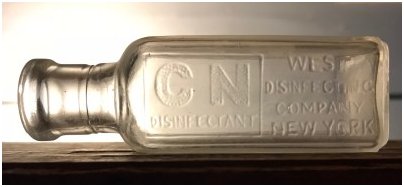
“The West Disinfecting Company was an early manufacturer of disinfectants and a pioneer in bathroom/restroom cleanliness. The company held patents for a wide range of disinfectants as well as for items still seen universally in restrooms today such as liquid soap dispensers and paper towel dispensers. This 1909 advertisement showed an early version of their liquid soap dispenser.
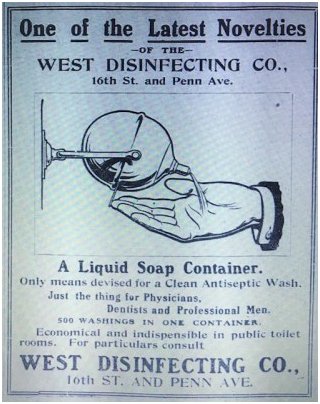
Their signature cleaning fluid and disinfectant was called Chloro-Naptholeum, or CN for short.
It appears that the business had its roots with Robert S. West in the late 1880’s in Cleveland, Ohio. An item in the July, 1888 edition of “Carpentry and Building” indicated that West had introduced Chloro-Naptholeum into the United States at around that time.
A disinfecting fluid called chloro-naptholeum said to possess thorough effectiveness as an antiseptic and disinfectant, besides being cheap and having an agreeable smell is being put upon the market by Robert S. West, corner of Elm and Winslow Streets, Cleveland Ohio. From a circular before us we learn that this preparation is already largely used in England and a number of testimonials from those who have used the material abroad are presented. Its power as a germ destroyer is said to exceed that of carbolic acid and other similar antiseptics that are soluble in water. It does not dissolve in water but mixes with it, forming an emulsion like milk.
The 1900 census records indicated that Robert S.West was born in England and immigrated to the United States in 1870 at the age of thirteen. He’s listed in the Cleveland directories as early as 1874. Beginning in 1891 and lasting through 1899, the directories listed him as a disinfectant manufacturer with an address of 48 and 50 Long. During this period, the New York City firm of E. Taussig & Co. served as West’s representative and general agents on the east coast, using the trade name “West Disinfecting Co.” NYC directories listed E Taussig & Co. at 894 First Avenue (1892 to 1894) and later at 206 East 57th Street (1896 to 1899)…
By the late 1890’s Taussig & Co. had assumed control of the entire business. In accordance with an agreement dated August 4, 1898, E Taussig & Co. purchased from Robert West all interest, including patents and trademarks, in both his automatic disinfectors and chloro-naptholeum. Approximately one year later, the West Disinfecting Co., Inc. was established and on July 18, 1899, the Taussig business was transferred to the new corporation. Emil Taussig, served as the first president of the newly formed corporation. It was at the same time that the CN trademark was introduced as well. Trademark records indicate that it was first used in commerce in July, 1899.
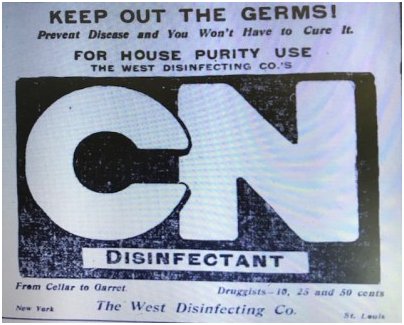
The new corporation was listed in the 1900 NYC Copartnership and Corporation Directory with offices at 26 East 59th Street in Manhattan. Around this time, the company also established a factory/laboratory across the East River in Queens. The 1903 Trow Business Directory for Brooklyn and Queens listed the factory address as 25 Orchard in Long Island City…
Emil Taussig served as president of the corporation until his untimely death aboard the Titanic in 1912. The following notice appeared in the April 20, 1912 edition of the New York Times:
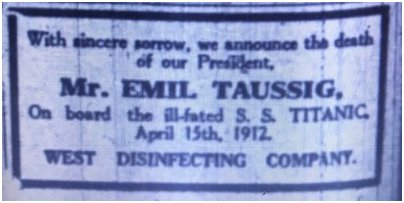
“the ill-fated S.S. Titanic”
According to an April 16, 1912 story in the Boston Globe, Taussig was on board the ship with both his wife and daughter.
They sailed for Europe Feb 5. He was going on a mixed business and pleasure trip on the advice of his friends, who felt he needed a rest. Although his headquarters was at Long Island City, NY, he knew every employee of the store who had been employed for a few years and would shake hands with them and call them by name when he called…He was very popular.
According to the Titanic’s records, Taussig’s wife and daughter both survived.
After Taussig’s death it appears that management and possibly ownership of the company transferred to Moses and Alexander J Marcuse. The 1914 NYC Copartnership and Corporation Directory listed them as president and vice president respectively. The Marcuse family remained active in the management of the company well into the 1950’s and possibly longer…”
The above history of the West Disinfecting Company retrieved from “Bay Bottles”
https://baybottles.com/2018/07/17/cn-disinfectant-west-disinfecting-company-new-york/
Check the link out for many more illustrations and history!
September 18, 2021
The Exposition
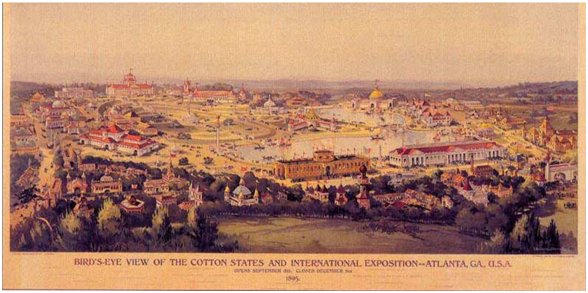
“The 1895 Cotton States and International Exposition was held at the current Piedmont Park in Atlanta, Georgia. It is most remembered for the Atlanta Compromise speech given by Booker T. Washington on September 18, 1895. The Cotton States and International Exposition runs from September to December featuring six thousand exhibits and attracting eight hundred thousand visitors. Booker T. Washington made the principal address at the grand opening with his “Five Fingers” speech. Other attractions include electrically-powered boats, Buffalo Bill’s Wild West Show, the Phoenix Wheel (a Ferris Wheel), and a midway. In late September Charles Francis Jenkins demonstrated an early movie projector called the Phantascope with their American debut in an exhibit called Living Pictures. The process projected film onto a screen and was unlike Thomas Edison’s Kinetoscope which limited viewing to one person at a time. After the exposition closes, Thomas Edison buys the rights to Phantoscope, renames the process Vitascope, and claims its invention.
The great American band master John Phillip Sousa composed his famous march, King Cotton for the exposition, and dedicated it to the people of the state of Georgia. The Liberty Bell was brought down to this expo.”
Above retrieved from: Medals of Atlanta Cotton States and International Exposition of 1895 https://www.expositionmedals.com/1895/
February 7, 2020
“Dates Open – September 18 to December 31, 1895. Not open Sundays, open 90 days.
Attendance – 1,170,933 (total including Staff). 779,560 (paid).
International Participants – 18 Nations and Colonies.
Total Cost – $1,130,456.70. Reports state that the entire cost, including exhibitors was $2.5 million.
Site Acreage – 189 acres in today’s Piedmont Park.
Sanction and Type – Prior to the Bureau of International Exhibitions. Would be considered a Special style Recognized event today like those on the 2-3 or 7-8 years of the decade. Exposition received Federal appropriation of $200,000. State Department lent its diplomatic channels to seek foreign exhibits, although diplomats did not, for the most part, seem to be actively soliciting foreign governments, with most work done by private agents.
Ticket Cost – Adult 50 cents; per capita 0.487. Fair got $380,000 from admissions.”
Above retrieved from ATLANTA, UNITED STATES 1895 Cotton States and International Exposition
https://americasbesthistory.com/wfatlanta1895.html
September 18, 2021
